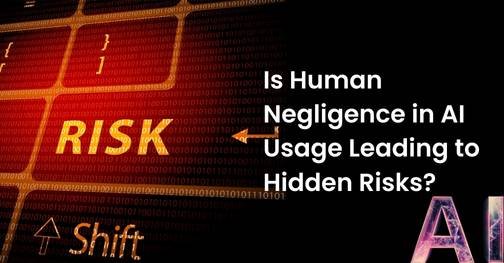As AI systems rapidly expand into more areas of our lives, from healthcare diagnostics to autonomous driving, it’s easy to focus on their potential and overlook the risks. But there’s a subtle danger lurking in how these systems are deployed, and it often boils down to one thing: human negligence in AI. Even the most sophisticated AI models are only as good as the data, safeguards, and oversight they’re given. And when these elements are neglected, AI can create risks that go unnoticed until it’s too late.
Data Bias – How The AI Is Being Trained
- The critical issue here is that these biases aren’t always immediately obvious. They’re hidden in the way the model is built and the data it’s fed.
- Often, developers don’t fully audit or scrutinize the data before training the model, which means any existing prejudices within the data slip through, unnoticed.
- Once the model goes live, it amplifies these biases, affecting real people in real situations.
Overreliance On AI
- AI is now used to assist with diagnoses, flagging potential diseases based on medical imaging. But if doctors rely too heavily on AI outputs without thoroughly reviewing them, mistakes can slip through.
- In 2022, a study found that an AI tool used to detect skin cancer was significantly less accurate on darker skin tones because it had been trained predominantly on images of lighter skin. About 4 – 18% of the total number of images contained dark skin images. Here is the link to the study.
Leaving AI Systems Exposed
Ignoring The Ethical Implications of AI Decisions
Social media platforms use AI to maximize engagement, which has indirectly contributed to the spread of misinformation, polarization, and even mental health issues among users. These AIs aren’t malicious—they’re simply optimizing for engagement metrics without understanding the broader impact. But human negligence in AI—specifically, failing to recognize and address these ethical concerns—has allowed this to become a widespread problem.

